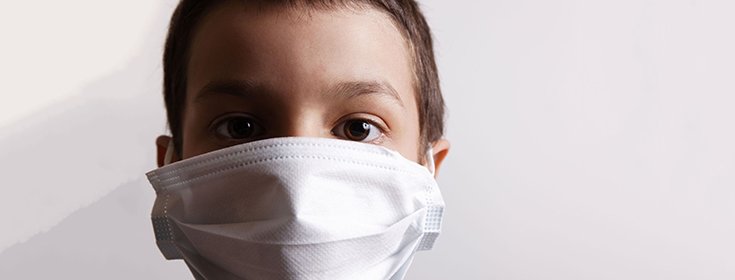UNICEF: 300 Million Kids are Breathing Toxic Air

New research from the United Nations Children’s Fund (UNICEF) shows that 300 million children – 1 in 7 globally – live in areas with “toxic” levels of air pollution. [1] [2]
The poorer a child is, the more likely he or she is to be surrounded by filthy air, and the greater the likelihood that he or she will suffer health problems as a result.
The report, which uses satellite imagery to determine the impacted areas, comes as international leaders prepare to gather in November in Morocco to continue the work of cutting carbon dioxide emissions and staving off the worst effects of global warming. [1]
No Escape
According to the report, the effected children live in places “where outdoor air pollution exceeds international guidelines by at least 6 times.” Altogether, it states, some 2 billion children are breathing air that has been deemed a “long-term hazard,” exceeding minimum standards set by the World Health Organization (WHO).
In a statement, UNICEF Executive Director Anthony Lake said:
“Air pollution is a major contributing factor in the deaths of around 600,000 children under five every year — and it threatens the lives and futures of millions more every day.
Pollutants don’t only harm children’s developing lungs — they can actually cross the blood-brain barrier and permanently damage their developing brains — and, thus, their futures. No society can afford to ignore air pollution.”
Children are especially vulnerable to the effects of air pollution, UNICEF writes. Their lungs are still developing; their respiratory airways are more susceptible to blockages; and youngsters “breathe twice as fast, taking in more air per unit of body weight, compared to adults.”
Read: Toxic Nanoparticle Air Pollution Found in Human Brain Tissue
And while adult bodies also struggle to compensate from the damage caused by air pollution, kids’ immune systems are weaker. All of this, combined, puts children at risk for a lifetime of health problems. [2]
Study author Nicholas Rees says:
“That physiological difference essentially makes them even more vulnerable. It’s also that the poorest children are the most affected. If we look at the burden of mortality associated with air pollution, we find that the vast majority – about 90% of outdoor air pollution deaths – are in low- and middle-income countries.”

According to the authors of the research, “studies have shown that the lung capacity of children living in polluted environments can be reduced by 20% – similar to the effect of growing up in a home with secondhand cigarette smoke.” [1]
The report goes on to say:
“The combination of respiratory, cardiovascular, cognitive, morbidity and reproductive health effects of air pollution have biological as well as social and economic effects that last a lifetime. These include health conditions, school attendance, school performance, health costs and productivity, which affect income, poverty and inequalities.
Air pollution, through its massive and cumulative impact on the overall health and well-being of children and parents, can perpetuate intergenerational cycles of inequality.”
Kids’ health is negatively impacted by both outdoor air pollution (such as pollution from a factory) and indoor air pollution (such as smoke from solid fuels used in cooking). However, outdoor air pollution is worse in “lower-income, urban communities.”
Air pollution also puts unborn children at risk. According to past studies, chronic exposure to high levels of particulate matter is linked to high rates of fetal loss (miscarriages), premature births, and lower birthrates. [3]
The report notes that it is difficult to separate the impact of the 2 because people are constantly moving between the 2 environments.
Additionally, the report states that current projections show that industrialization is making the problem even worse. Unless world leaders take action to cut outdoor air pollution, “studies show that outdoor air pollution will become the leading cause of environment-related child death by 2050.” [1]
UNICEF says:
“South Asia has the largest number of children living in these areas, at 620 million, with Africa following at 520 million children,” according to UNICEF. “The East Asia and Pacific region has 450 million children living in areas that exceed guideline limits.”
Air pollution has been linked to more than a half-million deaths each year in kids younger than 5, which is nearly double the death toll caused by malaria. For many children, the cost of breathing toxic air is a lifetime of battling pneumonia, asthma, and bronchitis. [2]
Championing Change

But it’s not a hopeless cause, if countries commit to changes and follow through on them. UNICEF is calling on world leaders to do the following:
- Reduce pollution by decreasing fossil fuel combustion and investing in energy efficiency.
- Increase access to children’s healthcare.
- Minimize kids’ exposure to air pollution by keeping schools away from factories and other known polluters and using cleaner cookstoves in homes.
- Improve monitoring of air pollution. [3]
Sources:
[1] NPR
[3] CNN
